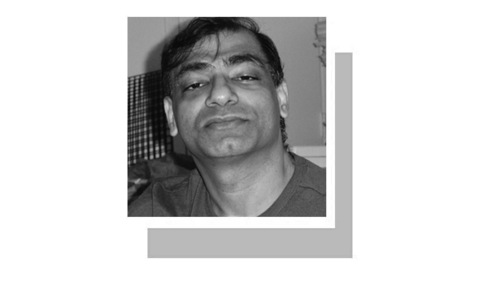
WHAT is punctuation? According to Concise Oxford English Dictionary, punctuation means “marks, such as full stop, comma and brackets, used in writing to separate sentences and their elements and clarify meaning”.
Oxford’s Manual of Style says “punctuation exists to clarify meaning in the written word and to facilitate reading”. The Oxford’s manual has also mentioned apostrophe, quotation marks, brackets, hyphens, dashes and ellipses in the chapter on punctuation. Encyclopaedia Britannica has included in punctuation the “spacing”, along with “conventional signs” and “typographical devices as aids to the understanding and correct reading, both silently and aloud, of handwritten and printed texts”. In brief, punctuation marks are the signs and symbols that clarify how a text is to be read and without these marks we may run the risk of miscommunication.
When it comes to punctuation in Urdu, we have a history not too long, though in Arabic the use of certain symbols and marks was in place for centuries, especially to guide the readers of Quran: few punctuation marks were used in Urdu before Sir Syed Ahmed Khan and, according to Dr Shams Badayuni, Sir Syed’s revolutionary steps included the introduction of Arabic typesetting for Urdu printing and the use of punctuation marks.
Dr Badayuni is a senior scholar of Urdu from India. To his credit, he has many works on different topics, but Ghalib seems to be his first love. Another area that fascinates Badayuni is linguistic issues, such as, proverbs and their use in Urdu poetry, differences on orthographic issues among scholars and punctuation. His latest work, just published by Anjuman Taraqqi-i-Urdu Hind, Delhi, is on punctuation. Titled Rumooz-i-Auqaaf (signs of punctuation) and subtitled Kab, Kahan Aur Kyun? (when, where and why?), the book proffers rare information on the marks and abbreviations used in Urdu to punctuate the text. What were the signs used for punctuating Urdu texts in old days? When and how did the punctuation marks used in English assimilate in Urdu? Who were the authors that introduced and recommended different marks in Urdu? Who was the author that translated the English term ‘punctuation marks’ into Urdu and termed the marks ‘rumooz-i-auqaaf’? The book answers these questions.
In the first portion Dr Badayuni has listed signs, symbols and abbreviations along with how and on what occasions they are used in Urdu and/or Arabic and Persian, briefly explaining their meanings and use. Some of the information presented is quite rare. The second portion narrates the history of punctuation marks used in Urdu and says that though Sir Syed had favoured the use of punctuation marks, John Gilchrist was the first person to have written a booklet on Urdu orthography and punctuation marks that were to be used in the books published by Fort William College. But the booklet is not available today and only its précis is given in Mir Sher Ali Afsos’ book Baagh-i-Urdu (1802) and Hafeezuddin Ahmed’s book Khirad Afroz (1804).
After Gilchrist, says Dr Badayuni, Imam Bakhsh Sehbai published a booklet named Risala-i-Qavaid-i-Urdu (1845) that discussed punctuation as well as grammar. Tracing the history of Urdu punctuation, Dr Badayuni adds that some textbooks published by the British India government after 1857 had punctuation marks, too, but they lacked a standardised and unified code. Then in 1872, Munshi Ghulam Muhammad published Risala-i- Nujoom-ul-Alaamaat, introducing some new symbols and signs for Urdu texts along with punctuation marks already in vogue in Arabic. Sir Syed drew the attention towards the use of punctuation marks through his article that first appeared in Oct 12, 1874 issue of Tehzeeb-ul-Akhlaaq, adds Dr Badayuni. But Sir Syed admitted that he got a cue from Munshi Ghulam Muhammad’s book and, while appreciating it, criticised its certain aspects. In addition to recording some other authors’ contributions towards making punctuation popular in Urdu, the book under review acknowledges Rasheed Hasan Khan’s efforts in the realm of punctuation marks and symbols along with the ‘airaab’ (diacritical marks) that Rasheed Sahib has discussed in his epoch-making work Urdu Imla (1974).
Dr Badayuni has also acknowledged the usefulness of the contents of another book on punctuation marks, which was written by Dr Syed Muhammad Arif. Titled Rumooz-i-Auqaaf: Tehreer Ka Husn and published in 2007 by the Higher Education Commission, Islamabad, Dr Arif’s book is little-known and hard-to-find even in Pakistan, but it narrates the history and use of punctuation marks in Urdu. Dr Badayuni was able to refer to the work and, while acknowledging the effort as being the first complete book (not booklet) in Urdu on the topic, has expressed some reservations. Dr Badayuni has also taken exceptions to some notions expressed by some other scholars and has given his opinion in an honest and truthful way.
It can be safely said that Dr Badayuni’s book Rumooz-i-Auqaaf is the most comprehensive and authentic work on the topic.















































Dear visitor, the comments section is undergoing an overhaul and will return soon.